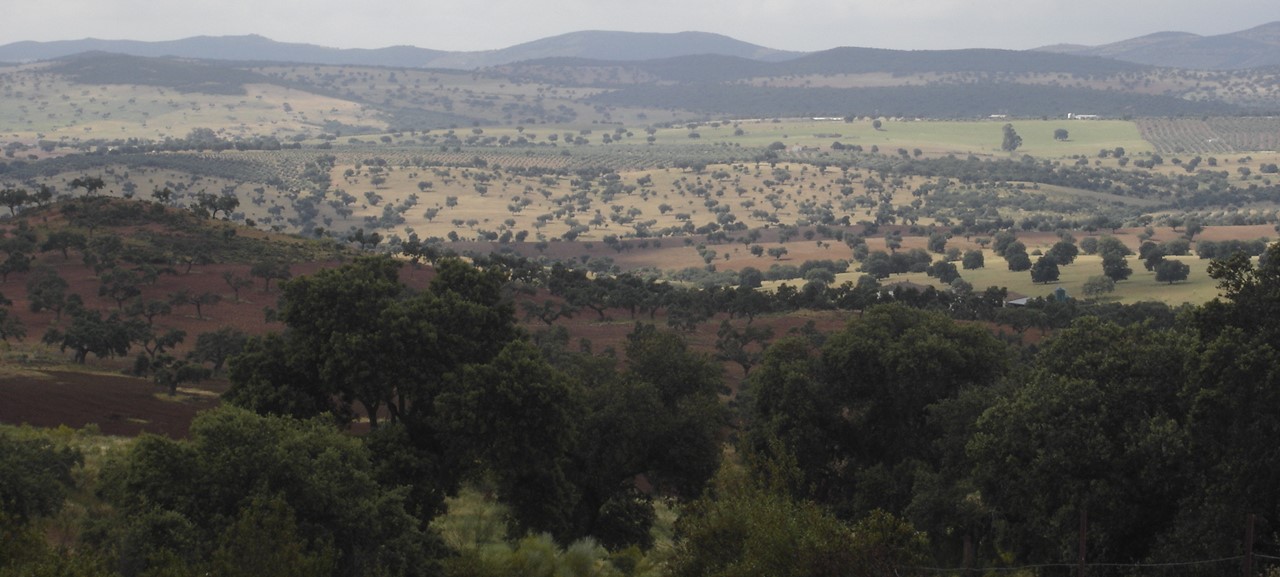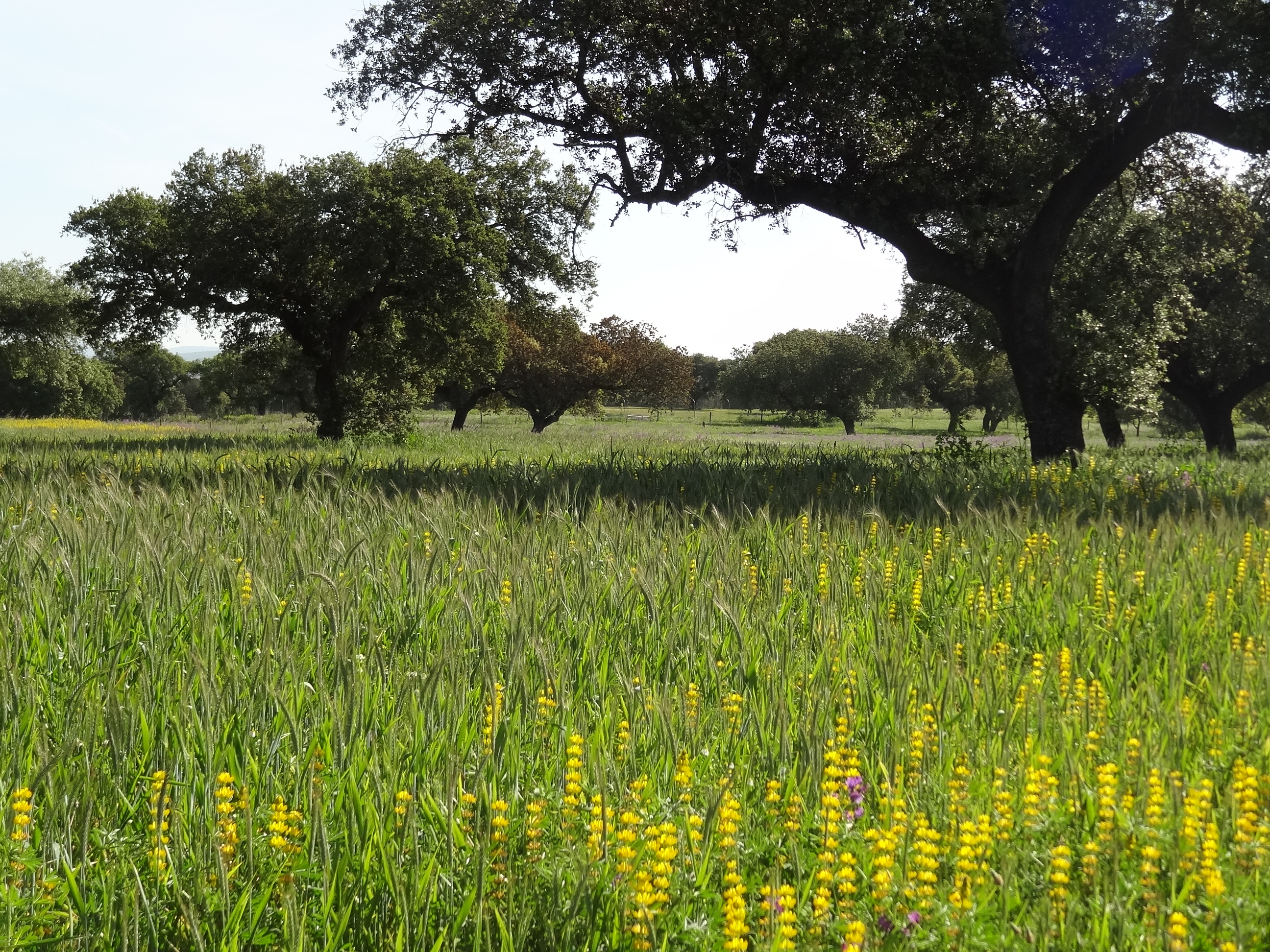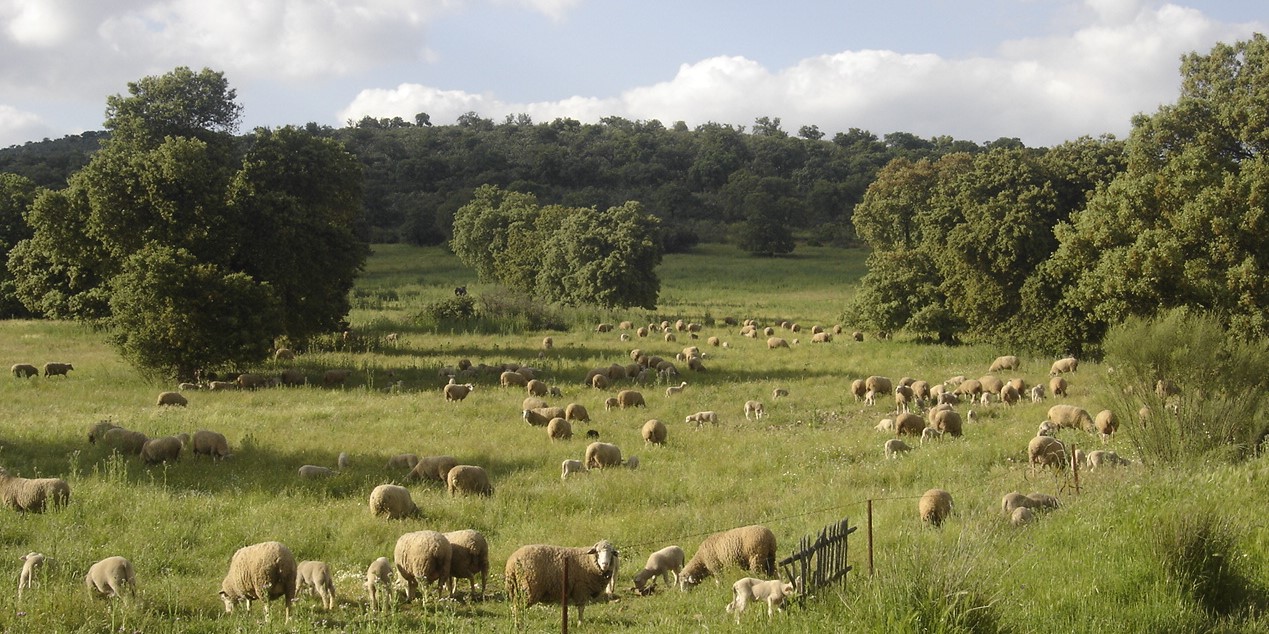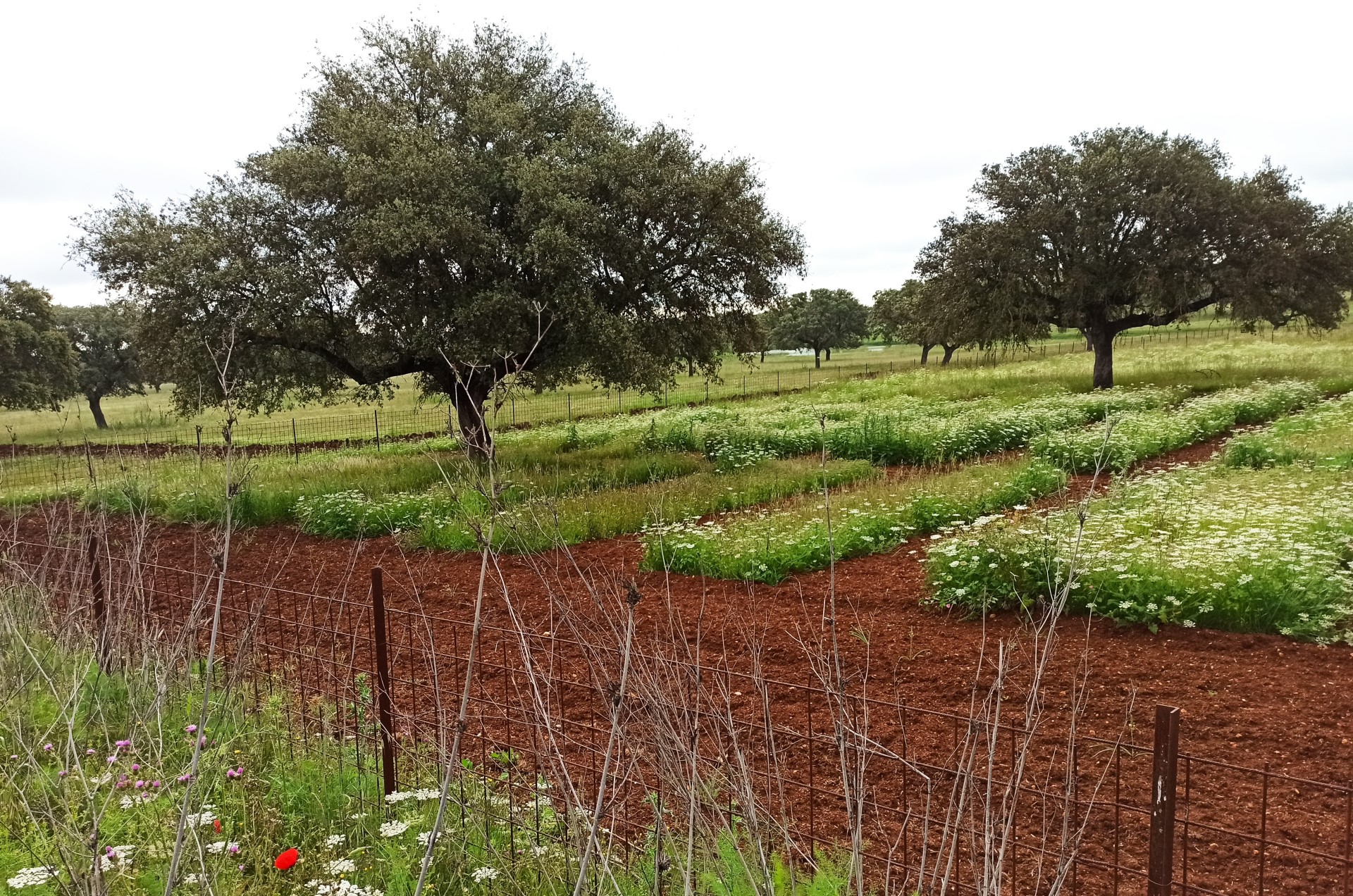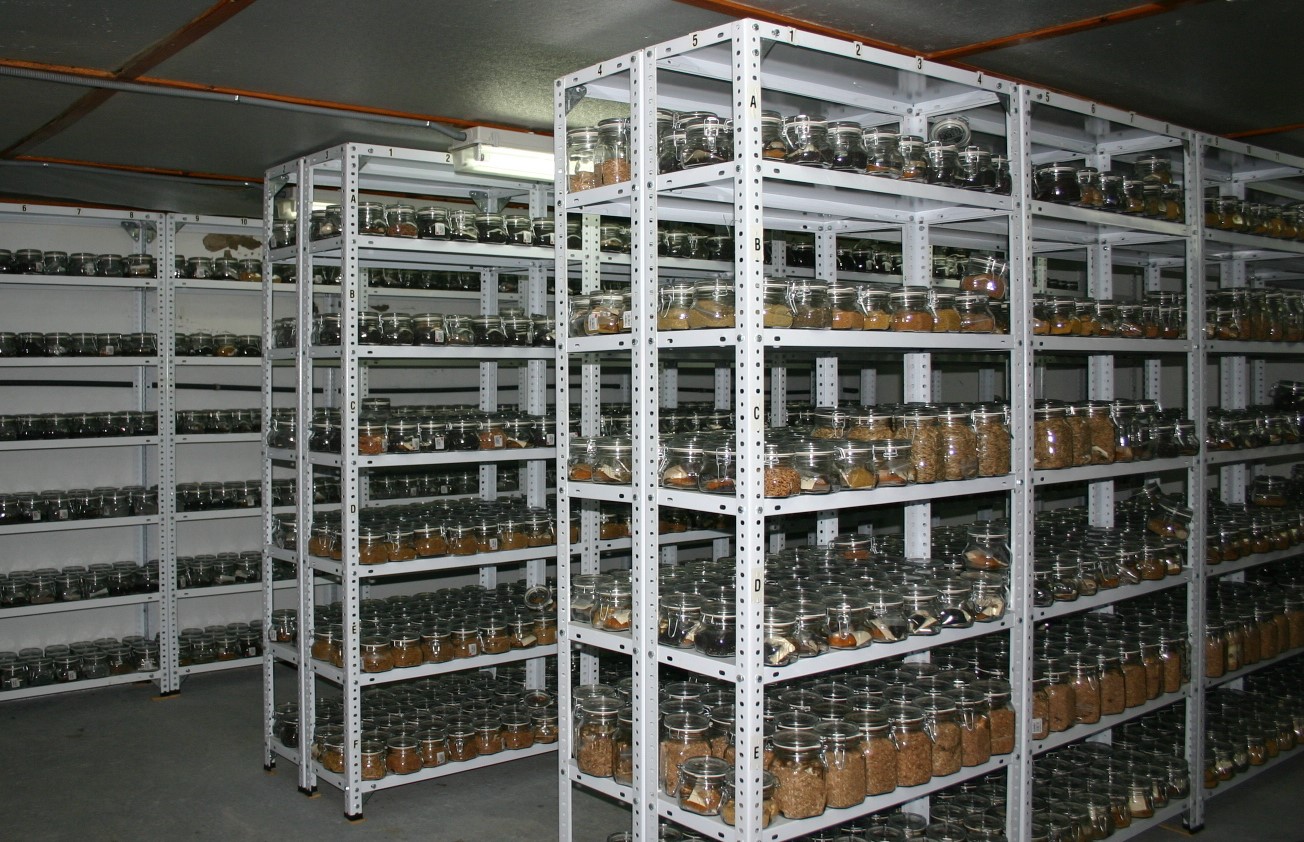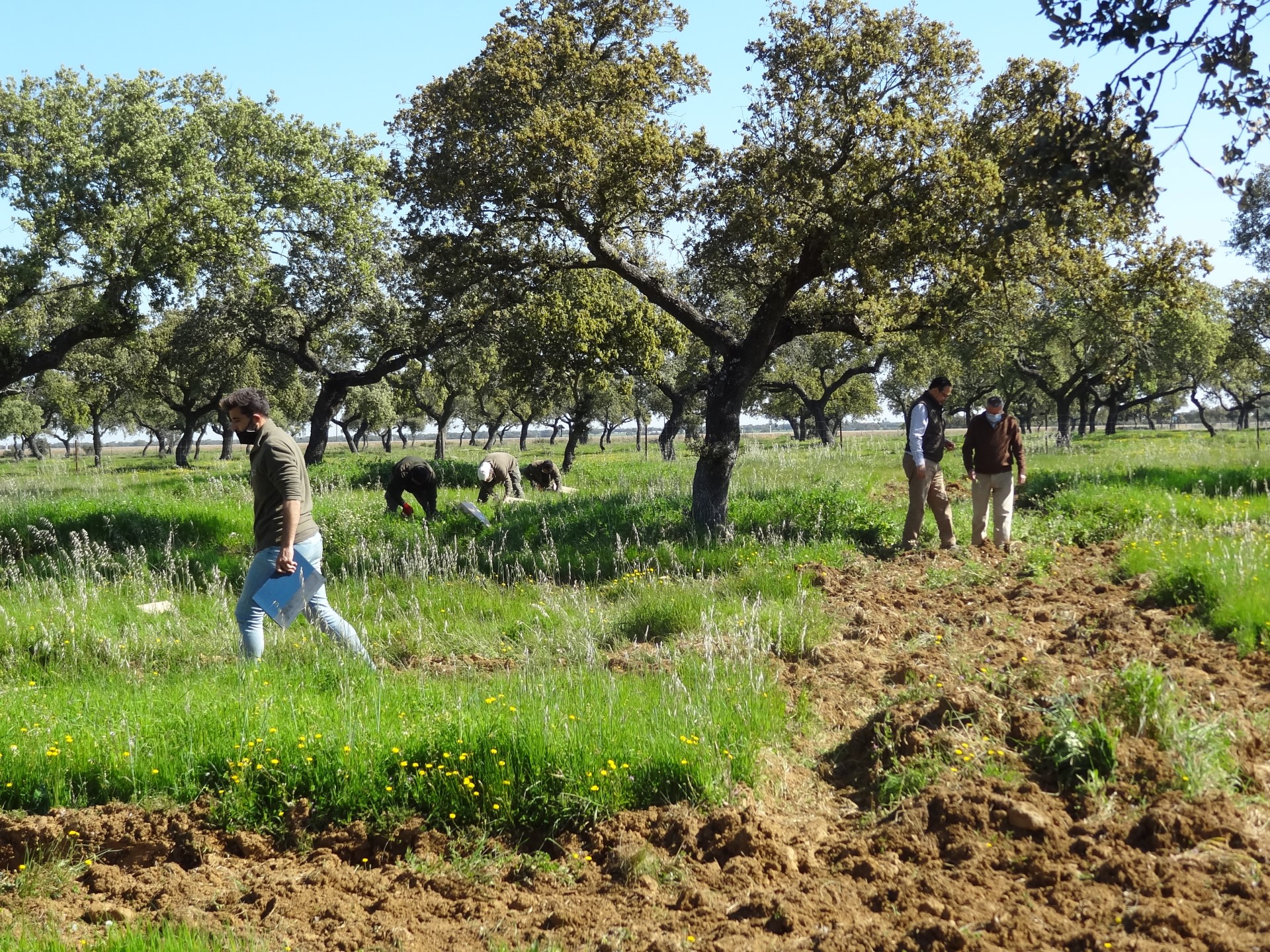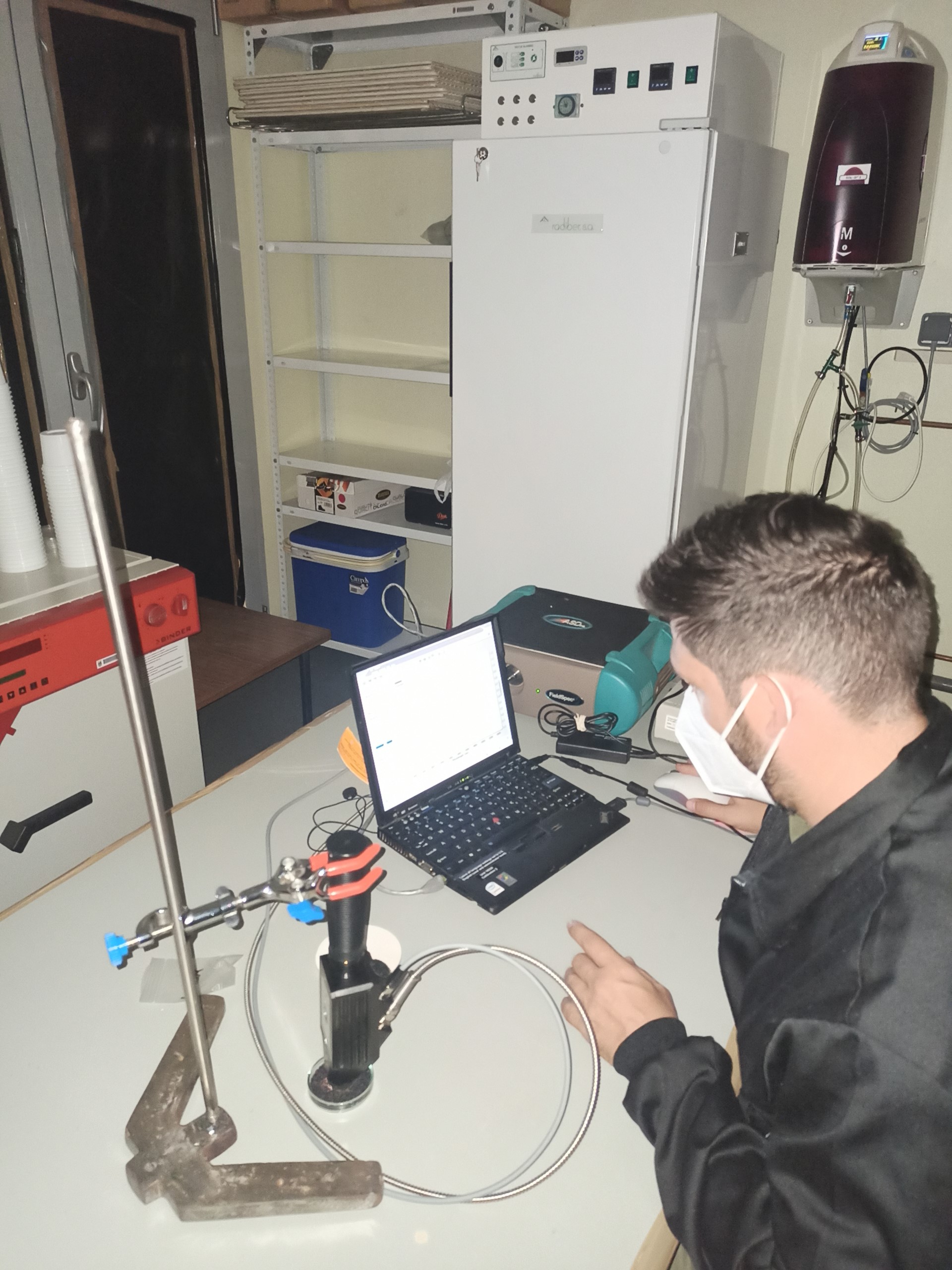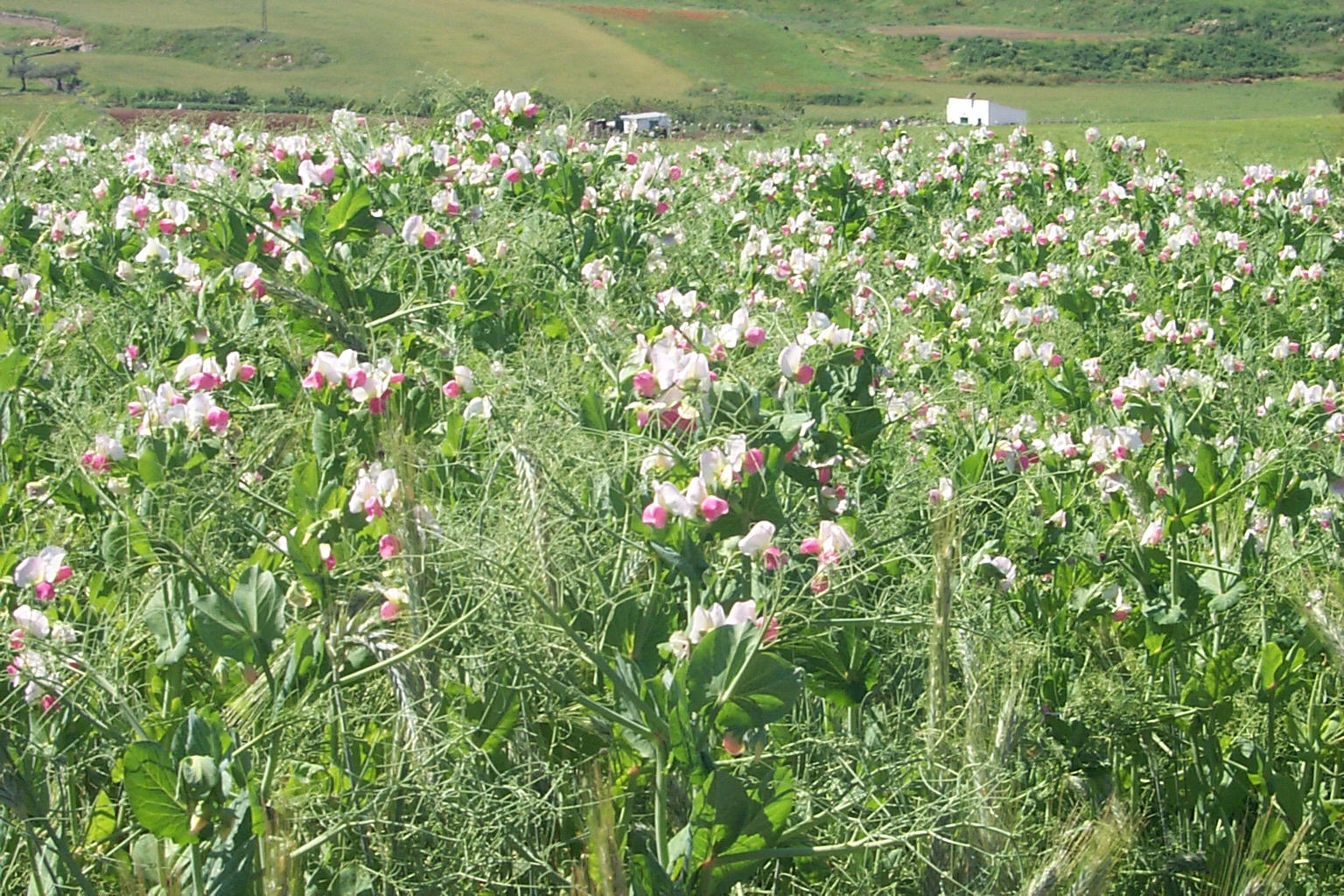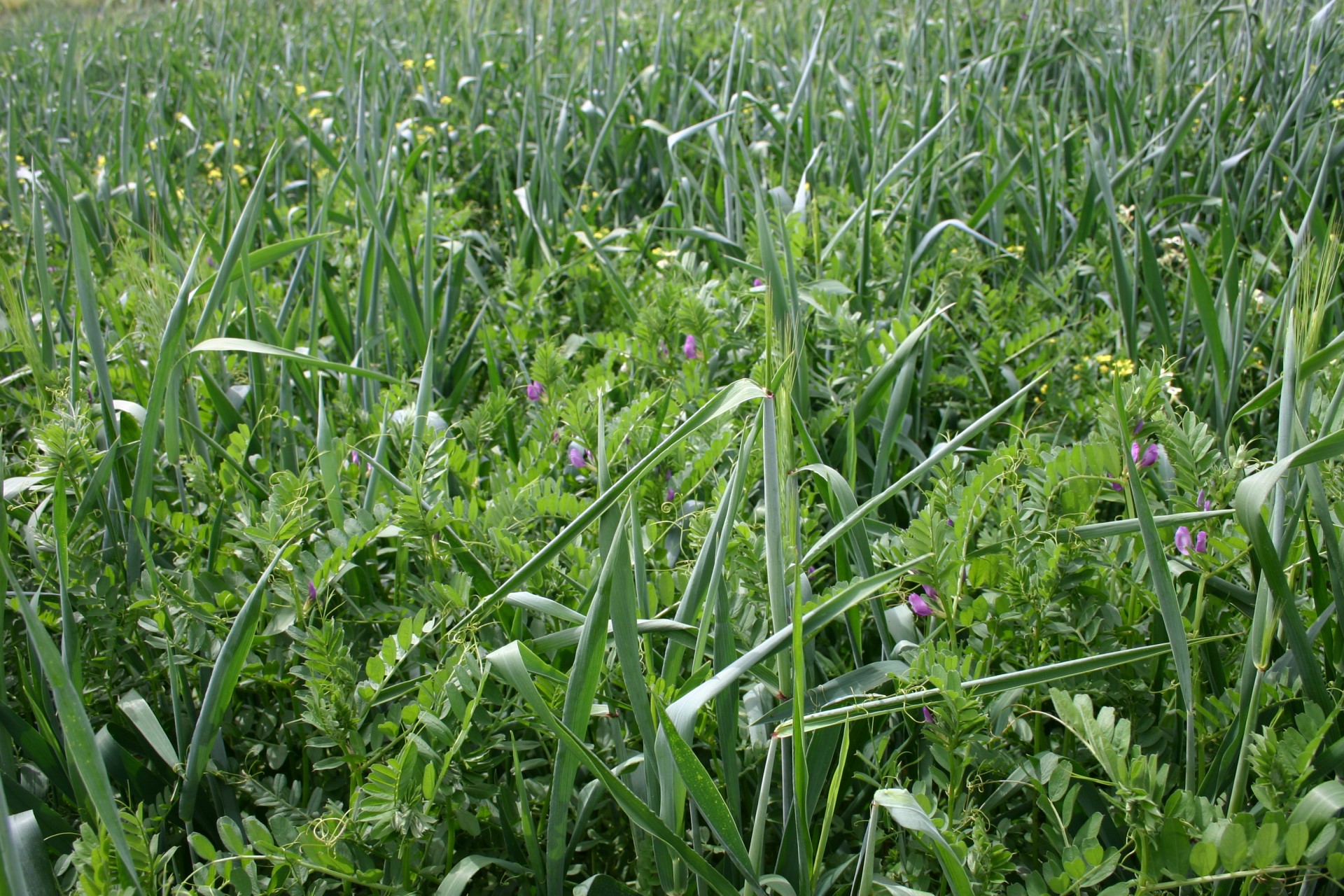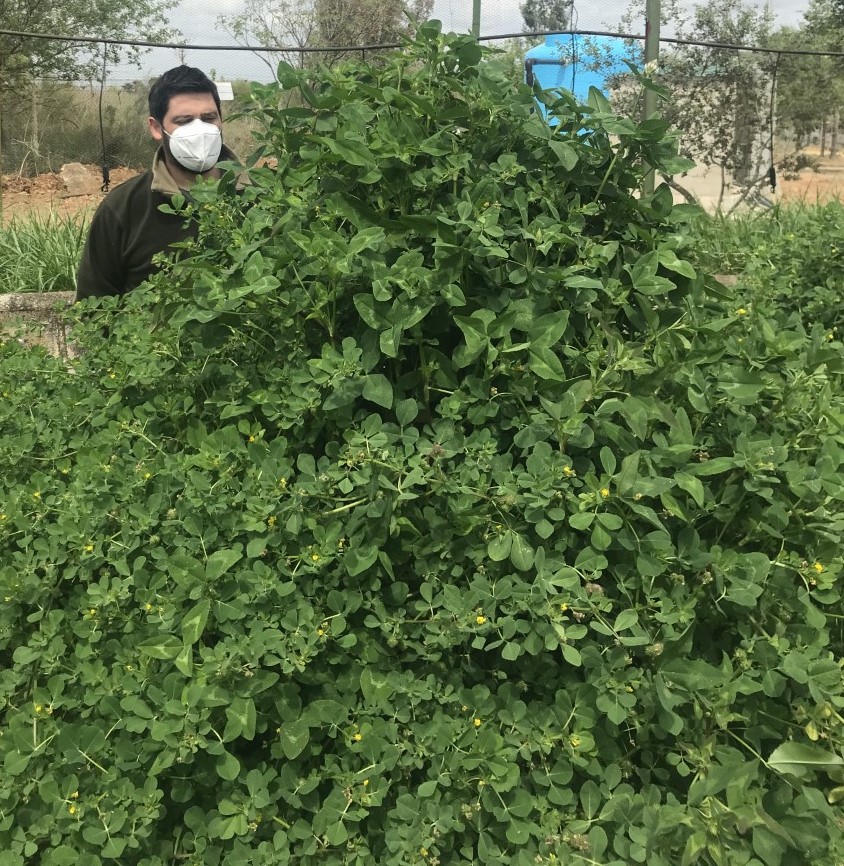
Forage crops and pastures
 General information
General information
With a total area of 41,633 km2, Extremadura consists of the two largest provinces of Spain. Both are characterised by major soil and climate variability and dramatic contrasts in terms of use of their territories. Dehesas and pasturelands occupy just over 50% of Extremadura’s areas and feed a large livestock population mainly integrated by autochthonous breeds.
Dehesa is the most representative ecosystem of the Iberian Peninsula. Spain has approximately 4 million hectares of dehesa of which the largest portion is situated in Extremadura, with approximately 1.43 million hectares. Dehesa is an agrosilvopastoral ecosystem where its components cohabit and benefit from each other (trees, bushes, pastures and livestock) and where harmony amongst all its industries, i.e. agricultural, livestock farming and forestry is paramount as it provides grazing livestock with the majority of its feeding requirements.
Dehesa-type systems are a unique landscape in the world, which are included by the European Union in projects on cultural landscapes and high natural value farming systems. The origins of dehesas derive, to a great extent, from human activity throughout history. They are landscapes with high environmental value and very susceptible to change, mainly due to the fact that their economic productivity is quite low.
The Dehesa system has traditionally been self-sufficient with the external contributions being minimal and mainly provided to the grazing livestock. Agriculture on dehesas is a secondary, although a very necessary activity, conducted in order to preserve this system. It requires daily ploughing of the ground in order to prevent shrub invasion. The most frequent and representative crop in dehesas is cereals such as barley, oat and rye, although in recent years the last one has practically disappeared from the dehesa, and has been replaced with triticale and some –not prominent- legumes such as lupine, and specifically Lupinus luteus (yellow lupine). Such crops provide feeding grain and straw (stubble) to livestock, but their yield is very limited.
Planting forage crops seems to be a positive alternative for grazing purposes and/or subsequent harvesting and haymaking or silage, as they are fundamental in the maintenance of dehesas and used as a food complement of pastures at times of scarcity in the fields in the winter and summer, and as a consequence of the effects of climate change in the last few years, also in the autumn. On that account, the importance of forage crops is more than justified for the feeding of animals in extensive systems.
 Pastures
Pastures
Pastures can consist of any vegetable crop that serves as livestock feed, whether grazed or as fodder. The herbaceous species constituting the pasturelands of the Southwest of the Iberian Peninsula are very diverse and they mostly belong to the following classes: “dehesa pastures” and “grasslands”, which are rainfed pasturelands that feed the extensive livestock farming system in the Extremadura region. Although, we must not forget the large fields occupied by irrigation meadows in the North of the region as they are very important in terms of territory, and social and economic relevance.
The majority of the pasturelands of the dehesa areas consist of Mediterranean acidophilic perennial plants, high and relatively dense and seasonal (drying out in the summer), with predominance of grass, although, depending on the area, they can be integrated by some species or others, with the majority of the pasturelands belonging to the Agrostion castellanae type.
Human activity on dehesas in the last years consisted of clearing the forests and keeping abusive stratum under control so that trees can thrive and yield more fruits. This also brings stability to the pastureland and increases its presence, as well as improving its composition as the sun radiation becomes increased as a consequence of the clearing of trees and the restricted competition from abusive stratum.
Pasturelands are integrated by a large number of species, mainly determined by the type of given soil, the weather conditions, the woody species cohabiting in the same space, the type of livestock feeding on them and the decisions being made in terms of handling, which shall determine the stocking rate allowed in the pastureland.
Productivity and quality of the pastures are generally determined by the presence of meadow grass and legumes in the herbaceous community. This fact is due to the high capacity of grass (poa, ryegrass, brome, etc.) to produce dry matter and its high protein content, as well as the capacity that legumes (subterranean clover, medicago polymorpha, ornithopus, etc.) have to fixate nitrogen from the atmosphere, thus fortifying the soil with this nutrient for the growth of grass, amongst many other reasons, with the balance between these two large herbaceous families being a very reliable indicator for the assessment of the pasturelands.
In this line, the Pastures and Forage Crops Unit of CICYTEX has been working on the preservation of the genetic resources of meadow annual legume species since the 60’s, through the maintenance of a Germplasm Bank of Meadow Annual Legume Seeds that is included in the Collection Network of the National Programme for Preservation and Sustainable Use of Plant Genetic Resources in Agriculture and the Food Industry.
Rational farming of the pastures enables for biodiversity and botanical composition to be balanced throughout time, with quality and productivity of the pasture community being maintained. Although on many occasions, due to their degradation, it is necessary to conduct integrated actions aimed at maintaining or recovering the original biodiversity of said pastures. The main measures channelling such actions for the improvement of the pastures are:
Rational elimination of competitive abusive and woody species.
Arrangement and improvement of pastureland infrastructures (enclosures and water points).
Rational use of the pastures through adequate management of stocking rates in terms of time and method.
Introduction of meadow species in the herbaceous community.
Pasture fertilisation.
All the reports on the status of the world’s biodiversity currently reveal how biodiversity has become reduced in the latest decades. This process, together with deforestation and ecosystem fragmentation, accelerated greenhouse gas emissions, climate change, desertisation, contamination, inequality and poverty, are causing a situation of global change with major social, economic and environmental consequences.
In this sense, extensive Mediterranean ecosystems with traditional managements models, which are on many occasions diversified, have higher levels of efficiency and genetic diversity. Although many of them are degraded, others that are subjected to moderate stress are simply altered, and these should be the focus of special attention.
Keeping the biodiversity levels in pasturelands enables their adaptation to any potential disruptions, softening their effects and allowing them to return to their status of balance as happens currently with climate change. Such balance in terms of species, turns pastures into major and efficient ecosystem services. Such services, such as carbon fixation, which has been highlighted by the European Union for years and has recently been reflected in the new Common Agricultural Policy, are increasingly important in the fight against climate change.
Among its funding lines, the new Common Agricultural Policy (CAP) has created the eco-schemes, which are specific voluntary payments made to applicants conducting beneficial practices for climate and the environment. One of such practices aiming at the preservation and improvement of the organic carbon content of soils, is the maintenance of pastures and ground cover plants in crop areas and the rational use of pastures.
Germplasm Bank
The meadow and forage seeds Germplasm Bank of CICYTEX has 4,431 ecotypes of trifolium genus, 1,091 of medicago genus, 588 of ornithopus genus and 308 of biserrula genus, amongst others. As well as maintenance and preservation of the bank seeds, the agronomic characterisation of said meadow species has traditionally been conducted, and currently also their morphological, physiological and radiometric characterisation, with the purpose of complementing the conventional approaches of plant improvement and establishing environmental profiles, especially from the point of view of the capacity that such species present to stress caused by heat, draught, efficient use of nitrogen, and phosphorous and carbon fixation, and ultimately, assess their adaptation and ability to overcome climate change.
Radiometric characterisation allows to establish a spectral library of meadow species and the soils of Extremadura on which they live, generating the possibility of developing several predictive models fast, economically and sustainably for the estimation of production and quality of the pastures and other models on forage crops, cereals, and grain legumes in order to assess their fertilisation, quality, antinutritional characteristics, etc.
Improvement Plan
In this area we continue to develop an improvement plan of the main meadow species and forage crops of dehesas with the purpose of making diverse and productive combinations of high quality with adaptability to the soil and climate features of Extremadura and to soften the stress caused by unpredictable climate events such as draught, heat, cold, etc. due to the fact that the climate conditions will become increasingly more variable due to climate change. In this respect, a number of criteria are taken into account to assess the varieties of each of the genera and proceed to select the meadow species:
Persistence factors:
An adequate maturity assessment within the environment.
High levels of seed production, with capacity to bury clusters or to form seeds with growing potential on the ground’s surface.
Hardseededness and dormancy.
Resistance to insects and disease.
Tolerance to grazing.
Production factors:
Early growth (earliness).
Oestrogens’ low content.
Good palatability.
Adaptability to various types of ground.
The improvement programme currently depends on the employment of radiometric and artificial intelligence techniques associated with molecular markers in some cases, with the purpose of obtaining objective data to conduct the plant improvement of meadow and forage species.
Spectral radiometry is a very powerful selection tool that provides the possibility of assessing the character of a high number of genotypes by itself, with greater efficiency in the assessment of physiological character and the sufficient potential as to obtain genotypes with higher performance potential and to improve the response to stress. This technique allows for the assessment of various spectral indices with which to relate the aspects of plant physiology such as vegetable growth, water status, etc.
 Forage crops
Forage crops
Forage crops are usually planted individually (forage cereal and dual-purpose triticale) or in combination. Such combinations are usually integrated by grasses and legumes, mainly. Some of such grasses are triticale, oat, rye, barley, wheat and ryegrass; and some of the legumes can be lupine, ervil, grass pea, broad bean, vetch and pea.
The most common cereals used in forage combinations are triticale and oat, which are a resource of great use in dehesa farms as they set easily, secure production and are easily used. Ryegrass takes longer to set than cereals, but after being cut it grows speedily under adequate dampness and fertilisation conditions.
Of the legumes, ervils and grass pea have not been widely researched in Spain. This lack of information and the difficulty in finding the seed are reasons for these legumes not to be used in forage combinations. Lupines are scarcely used as well, with the main type being a Portuguese ecotype called “yellow lupine” (Lupinus luteus). This lupine is grown for the purposes of forage in countries such as Germany, Poland and Russia. Some varieties have only little alkaloid content, indehiscent pods, little hardseededness and are resistant to fusarium, but in Spain they have not adapted well. In tests performed in the latest years at Finca La Orden, evidence has been found that lupines and broad beans, when grown in association with cereals, have not set adequately after planting.
The combination of annual forage legumes with winter cereals for the production of forage has been used in the Mediterranean region for years. The associated growth of forage legumes with winter cereals can offer advantages compared to individual planting of such crops when producing forage, especially in the dehesa areas, where agricultural inputs are low. On the basis of the above, and in rainfed farming conditions on Extremadura’s dehesas, the most promising and used crops by farmers in the latest years in order to make forage mixtures are: triticale, oat, ryegrass, vetch and pea.
These five crops are perfectly adapted to the growing areas of Extremadura, both in rainfed cereal farming systems and in dehesas. However, timing and planting density must be taken into account, as well as soil type, climate restrictions, etc. for adequate setting.
The fluctuation of prices and the low quality of raw materials in the market make self-sufficiency a well-accepted option in extensive farms. Planting forage plant combinations (cereal-legumes) seeks to reduce the level of dependence on external fodder inputs, as the production of highly-nutritious fodder at low cost takes place in the farm itself.
At CICYTEX we are assessing various combinations of cereals and legumes such as oat-vetch, triticale-vetch, oat-pea and triticale-pea at various dosages for planting and at different times of harvest, so that they may serve as guidance for livestock farmers to optimise the planning of their farms.




